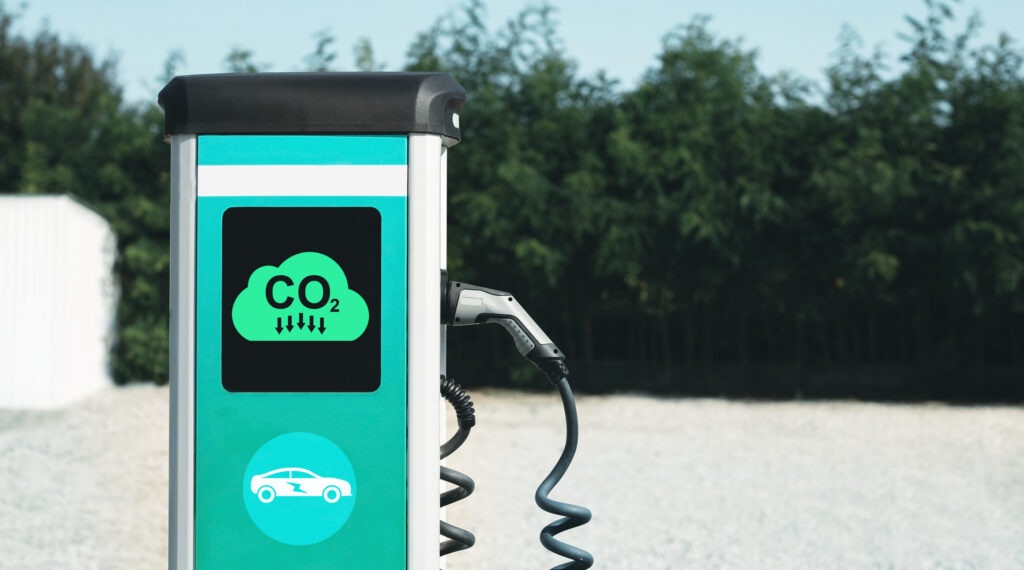How will the ZEV mandate affect the UK automotive market?
20 November 2023

The UK has set mandated targets of zero-emission vehicle (ZEV) sales for each manufacturer, starting in 2024. Autovista24 special content editor, Phil Curry, examines what this means for the industry and which carmakers are at risk.
While the UK has delayed its ban on the sale of new petrol and diesel vehicles until 2035, the ZEV mandate puts the onus on carmakers to reduce the number of internal-combustion engine (ICE) models they sell.
The new regulation is similar to the EU’s emission targets, which schedules the reduction of CO2 emitted over a set period in percentage terms, until 100% is reached in 2035. The ZEV mandate sets out a percentage of a carmaker’s fleet that must be zero emission, with this figure increasing each year. Those that miss their targets could risk receiving heavy fines.
The legislation was announced in September 2023, following calls from the country’s automotive industry. Carmakers wanted the rules set out so brands could prepare their marketing strategies and sales plans for the coming years. Now the framework is in place, how will carmakers be affected?
Strict targets in place
Each carmaker will be given a non-ZEV allowance up to a given percentage of their fleet. This means a certain portion of new model sales must be made up of zero-emission technologies, including battery-electric vehicles (BEVs) and fuel-cell electric vehicles (FCEVs).
Any excess non-ZEV sales must be covered by purchasing allowances from other manufacturers. Companies will use allowances from past or future trading periods (banking or borrowing) during the initial years of the policy, or by offsetting with credits. If not, carmakers face fines of £15,000 (€17,129) for every non-ZEV sold.
The ZEV mandate targets will come into effect in 2024, with 22% of new passenger car sales required to be zero-emission. In 2025 this will increase to 28%, and then onwards to 80% by 2030. In 2035, there will be a 100% target as the ban on sales of new ICE models comes into force. However, the position between 2030 and 2035 will be set out in future legislation.
Borrowing allowances
Some vehicle manufacturers may struggle to meet ZEV targets. Therefore, flexibilities have been built into the mandate between 2024 and 2026. During this period, carmakers may borrow a limited number of ZEV allowances from future periods if they are unable to achieve compliance.
However, the number that may be borrowed is capped and will decline each year. A total of 75% of the target may be covered by borrowing in 2024, then 50% in 2025 and 25% in 2026. Any borrowing must also be repaid with 3.5% annual interest to maintain carbon savings.
Unused allowances can also be banked for use in future years, although these will expire after three years of non-use. There is also potential for unused allowances to be sold to other carmakers, in a similar situation to the EU’s 2021 emissions limits.
Between 2024 and 2029, small-volume manufacturers (SVMs) selling fewer than 2,500 cars per year, will not be subject to the targets. To facilitate this, SVMs will receive allowances for each car or van sold (up to 2,499) every year, which can be used to cover the sale of a non-ZEV. If the SVM does sell ZEVs, it would have allowances remaining, allowing it to trade with another manufacturer.
Slowdowns and struggles
The UK BEV market is showing signs of slowing, and the ZEV mandate targets are currently higher than the powertrain’s projected market share in 2024 and 2025.
According to the latest forecasts from EV-volumes.com (part of Autovista Group), BEVs will account for 21.8% of all new-car registrations in the UK next year, increasing to 27.2% in 2025.
In 2026, BEVs will take 33.4% of the market, just 0.4% ahead of the ZEV mandate target, before creating a bigger gap in the following years. However, the latest forecast suggests that in 2030, BEVs will take a 75.5% slice of the market, now that the new-car ICE ban has been delayed.
Can manufacturers make it?
When it comes to manufacturers that may struggle, there are some big names that may look for offsets in 2024. According to data from EV-volumes.com and the Society of Motor manufacturers and Traders (SMMT), only 2.2% of Ford’s registrations in the first nine months of the year came from BEVs.
The second-largest brand in the country only has one all-electric model in its line-up, the Mustang Mach-e. Meanwhile its Explorer, the first car produced as part of a collaboration with Volkswagen (VW), has been delayed until the middle of next year.
Toyota could also face difficulties. Its only available BEV is the bZ4X and the Mirai FCEV sells in small numbers. Between January and September this year just 0.6% of its registrations came from zero-emission models.
Those volume manufacturers already above the ZEV mandate target up until September, not including electric-only brands, include MG (38.9%), BMW (24.1%), Mercedes-Benz (22.2%), Cupra (27.2%), Porsche (28.2%) and Jaguar (26.1%).
For many, BEV shares are not far away from the 2024 22% target and would require an additional push to get over the line. For example, in the first nine months of the year, VW managed a 16.1% share of ZEVs in its passenger car fleet. However, the brand has four BEVs in its range, providing variety to buyers.
Nissan, however, is struggling for BEV share. Recognised as a mass-market pioneer thanks to its Leaf model, the Japanese carmaker only sold 6,096 all-electric passenger cars in the first nine months of the year, just 8.8% of its total. The new Ariya may help it increase BEV sales, while the carmaker has stated it will only launch all-electric models from now on, becoming zero-emission only by 2030.
Manufacturers respond
Despite the effort required to achieve ZEV mandate targets, Ford supports the legislation’s introduction, and believes its path to becoming an electric-only manufacturer by 2030 will help it achieve the requirements.
‘Ford is on an accelerated path to an all-electric vehicle portfolio and carbon neutrality by 2035, and fully supports the government’s ambition for a zero-emission future,’ stated Tim Slatter, former chair of Ford of Britain.
‘The ZEV mandate is a crucial piece of the electrification puzzle that provides a vital indicator of charging infrastructure needs in the coming years. We know from our customers that the biggest barrier to the uptake of electric vehicles remains the availability and ease of charging.
‘The ZEV mandate gives a clear direction and should provide the confidence for infrastructure investors to commit and enable the future for electric vehicles on UK roads,’ Slatter said.
In a submission to the House of Lords inquiry into electric vehicles, the carmaker commented: ‘Since 2022, Ford has observed a softening of EV sales for both cars and vans. This has been driven by various factors, including an adverse total cost of ownership equation (high electricity prices compared to forecourt fuels, absence of retail sales incentives) and low consumer confidence in the accessibility and reliability of a UK-wide charging infrastructure.
‘We expect these to be further compounded by the introduction of the 10% battery rules of origin tariff on EU and Turkish-built vehicles in January 2024, the anticipated depletion of the plug-in van grant budget next year, and the introduction of VED on electric cars and vans in 2025,’ the carmaker added.
Toyota UK boss Agustin Martin told press that a number of carmakers would struggle to meet the targets. ‘Achieving the ZEV mandate is a real worry for everyone, because one thing is working out a strategy on a flea market, but it is much harder to have a strategy on a market that is fixed,’ he stated.
‘If there is wind behind the sails, then that is fine, but what happens if there is no wind? I do not think it is a worry for just Toyota, I think it is a worry for everyone,’ Martin added.
In a statement following the announcement of the ZEV mandate, VW Group said: ‘Having called for clarity and certainty, as well as for the publication of the ZEV mandate, for many months, we are pleased to finally have an understanding of the government’s intentions.
‘Clarity will enable us to validate our sales plans for the coming years. We continue to ask for sensible incentives and for a reliable, affordable, nationwide charging infrastructure, and we continue to demand action to give confidence to vehicle buyers in their EV purchase decisions,’ the carmaker said.
Potential outcomes
Those carmakers that are struggling with ZEV sales at present will likely take advantage of the borrowing scheme, using some of their future deliveries against those in the early years to achieve the mandate’s targets.
Manufacturers that are targeting 2030 to phase out their ICE models will benefit especially, as these carmakers have many models in the pipeline. Ford has said it will be launching two new SUVs, and an electric version of the Puma next year, while Nissan has plans to release 19 BEVs by 2030.
Others may decide to create pools within their respective manufacturing groups. Dacia, for example, will rely on sales of the new Spring, which is not yet available in the UK and may therefore rely on credits from its parent company Renault.
Stellantis is also likely to share its allowance amongst its brands, especially as Alfa Romeo has no BEVs. SEAT too has no all-electric model in its line-up but will benefit as part of VW Group.
There is also a potential for some carmakers to streamline their ranges, reducing the number of ICE variants to ensure that ZEVs are considered by customers. However, this may drive some away from showrooms, with limited choice at a time of low consumer confidence.



